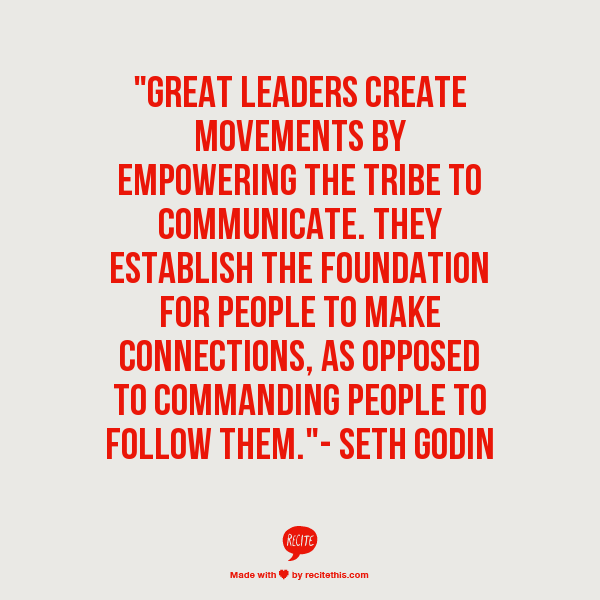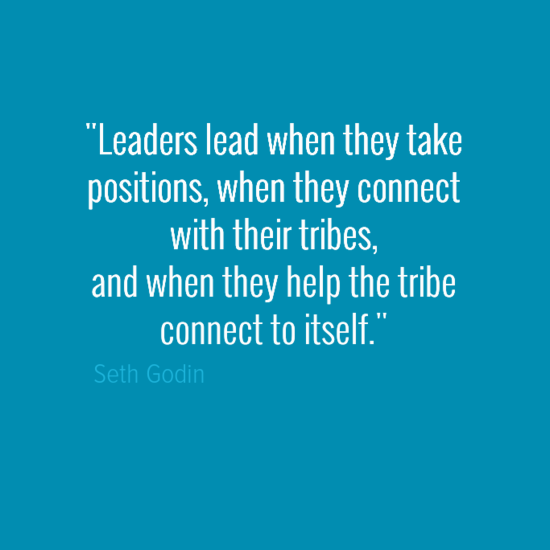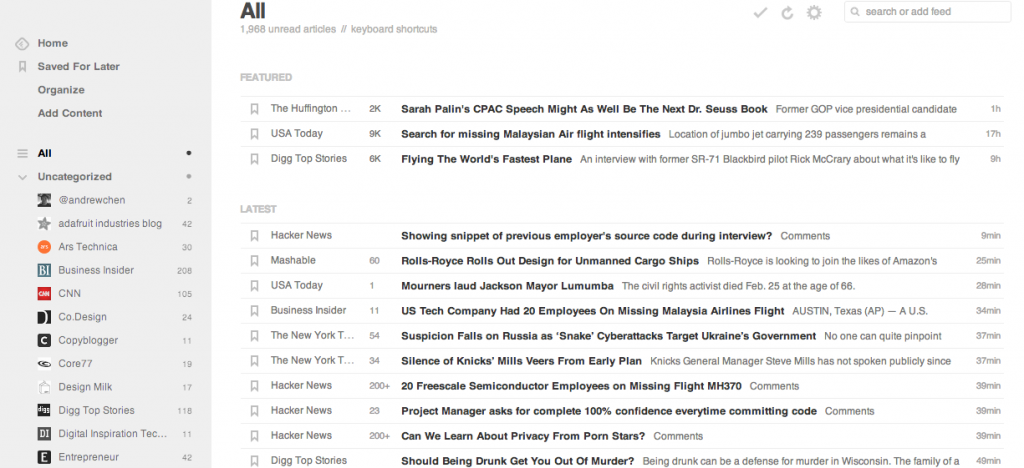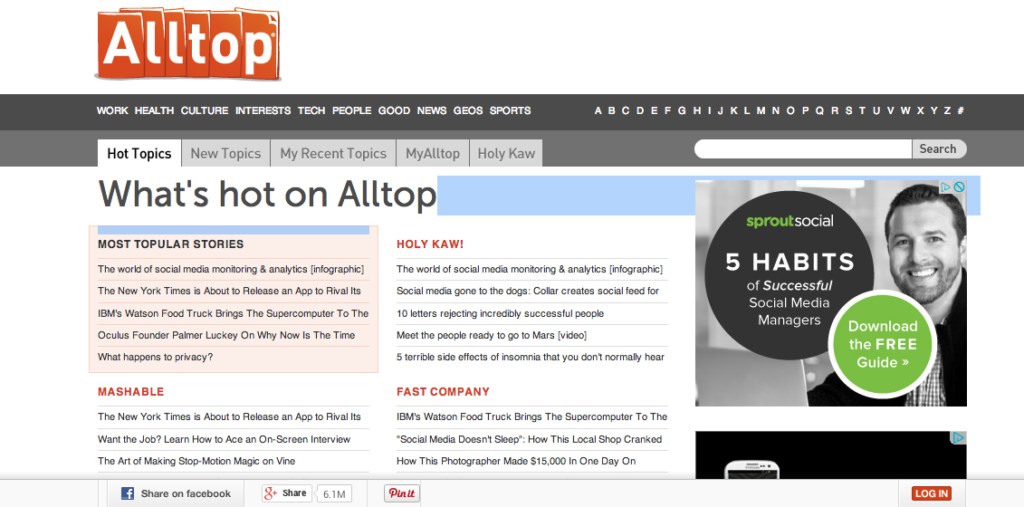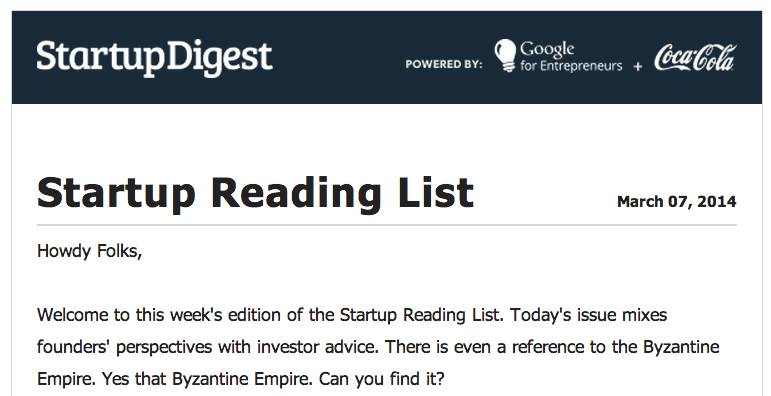Let’s be honest, most of you know why social media is important and why you should care.
Simply put, it’s a traffic driver. It’s a way to engage your customers and discover new ones.
However, I feel like social media has become like the gym. Everyone knows why you should go, but no one actually goes.
3 Common Reasons:
1. “I don’t have the time.”
This just means you have poor time management. There are software solutions like Buffer and Hootsuite to automate social media sharing. Personally, I love and use buffer. Curious about the differences? See my comparison here.
2. “Why would anyone care what I share?”
You won’t be using social media to share thoughts like “My cat just rolled over.” You will be using social media as a tool to figure out what type of content your audience likes and what problems they experience.
As a rudimentary example, let’s say you are in the business of selling men’s clothing and a post that you shared titled “How to look good on the weekends” gets a lot of clicks and retweets.
The problem: Your customers want advice on how to stylize themselves well, likely to appeal to the opposite sex.
The solution: The article you shared promises a solution.
You may consider writing similar content on your company blog and then sharing it. In the longterm, it would attract readers to the blog, who are also part of your customer base. You will then have the opportunity to sell them on your products.
3. “I’ll do it later or once I have an audience.”
Social media is like investing – the earlier you get in, the larger your returns and the easier it is to do, simply out of habit.
You can use social media as a tool to either: connect with an audience you already have or develop and attract an audience.
To me, it’s a no-brainer that if there is a free marketing platform out there, and you are not taking advantage of it for your business, you are refusing to adapt to new technologies.
It’s like you’re using an old-school razor phone when everyone else has iPhones and can easily check their emails on the go.
Maybe it doesn’t matter in a personal sense, but in business, it will costs you $$ and might be the make-or-break factor as to whether you keep dreaming of success or actually achieve it!
Why will people follow you?
At the end of the day, people will follow you for two reasons.
1. You solve a problem they are experiencing.
The articles, tips, ideas, and advice that you share help them achieve their goals in some way. You should interpret this broadly. I follow some people simply to stay up to date on cutting-edge technology improvements in industries I care about.
My problem: I want to have the edge over all my competitors. I want to be able to put the pieces of the puzzle together faster than they can.
My solution: The news accounts and people I follow share the information that gives me that edge.
This type of content is logical. People want to know how to get better at marketing and logically, based on your previous helpful shares, they will benefit from following you.
2. You provide entertainment.
Ironically, this also solves a problem for people, but the distinct difference is that your content evokes an emotional response.
Examples could include: quotes, images, shocking or inspiring facts, etc.
This type of content is emotional. People will follow you based on how they perceive you will make them feel in the future. You may make them feel inspired, motivated, or hungry to reach their goals.
A good social media strategy includes both types of content. Your goal is to become a great curator of content on the web.
How to systematically build your audience.
I’ve already written about how to build your twitter audience, so this section will be about how to build your social media audience in a general sense.
1. “Consistently Be Useful” should be your mantra.
If you customers are small business owners, then what do their google searches look like?
What they search for online gives an indication of the problems they are experiencing in their business. Once you identify this, you can then share and generate content that engages them.
For example, from my experience in the crowdfunding industry I knew that creators were interested in what some of the larger crowdfunding campaigns did right.
This informed my content creation choices and social media results (which I’ve included below).
2. Take advantage of social media software.
Consider using these automatic scheduling tools. As for frequency, I usually tweet 5-8 times per day and schedule FB/G+ page posts for my business to appear twice per day.
3. Interact regularly in social media groups and conversations.
This could include: LinkedIn groups, Google+ Groups, commenting on blogs, Forums, twitter conversations, and more.
The more you put yourself out there, the more others will have the opportunity to see that you are an expert on a subject and are worth following.
4. Generate useful content on your website (content marketing).
The hidden secret about building up your social media profiles is that over time, you can begin driving traffic to your website.
By mixing in your own content into your sharing strategy (which should be informed by what you’ve discovered your audience likes), you can increase the likelihood that customers will find your website and your products.
5. This takes time.
Accumulating followers and improving audience engagement doesn’t happen over night. If you’re just getting started, plan for this to be an eight month to a year long process before you begin getting some momentum.
In that span of time, you will figure out what types of content works best for your audience, when the best time to post is, which social media channels are a good fit for your business, and you will gain an in-depth understanding of the problems that your customers face.
 I check Flipboard every morning (iPhone/Android app) for new stories and helpful resources.
I check Flipboard every morning (iPhone/Android app) for new stories and helpful resources.
You can create your own magazine, explore others, and in a few minutes, get a quick idea of the top stories on the web that day.
Feedly
I’ve included two snapshots of my Feedly account below. You can easily select a bunch of publications and quickly scan through all the headlines they’ve put out that day.
You can also save articles for later, and as the second image shows, with a single click, add that article to your Buffer or Hootsuite account and have it shared automatically on one of your social media accounts in the future.
StumbleUpon
You can use StumbleUpon to discover new websites in categories you selected with their “stumble” feature, as well as see what is trending or what other users consider to be good content.
You can then share that content on your own social networks. Generally, good content is universally recognized.
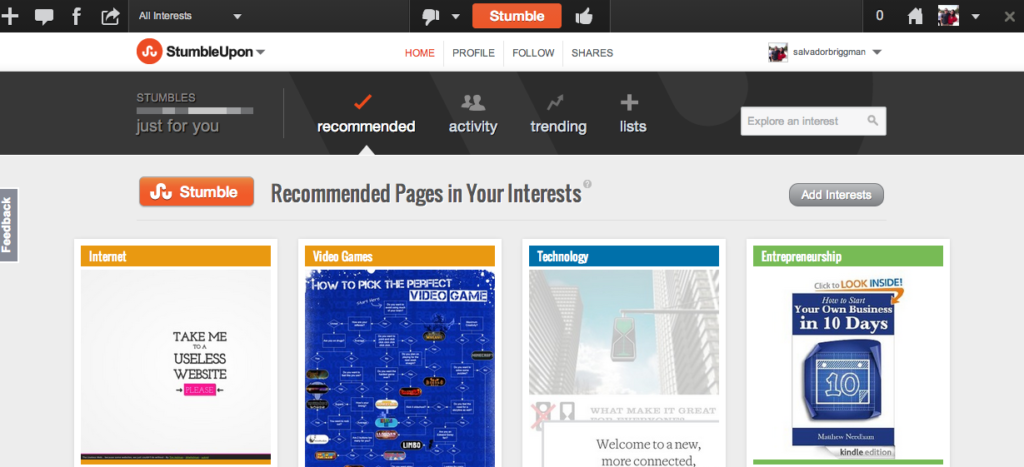
Alltop
Alltop is an older website, founded by the famous Guy Kawasaki. You can search RSS feeds by topic and publication. I like it because it gives you a quick overview of content that is being published on the web.
Digg
This website needs no introduction. Despite having declined over the years, I still think Digg a good source for discovering sharable/viral content which you can curate and share on your own networks.
This is kind of a cheat, but one way to farm content that is guaranteed to be received well by an audience is to see what is trending or being shared a lot on other social networks and then share it yourself.
Some of these networks could include: Reddit, Facebook, Google+, Twitter, LinkedIn, Pinterest, and HackerNews.
You can also go one step further and check out LinkedIn/G+ groups and specific sub-reddits to see what types of content are doing well or being shared a lot.
Viral Websites
If you have nailed down your customer demographic and are beginning to strategize as to how you will engage them emotionally, some good sites worth checking out are: BuzzFeed, Upworthy, Distractify, and Viral Nova.
I’m sure you’ve heard of these already :). Just be sure that what you are sharing would resonate with your audience (or target audience).
Google is awesome for finding content that consistently solves user problems. Arguably, it should be the best content. However, not too many people use it to discover new content.
Using the search-by-time feature, you can easily sift through new content being produced in your industry.

You could also schedule google alerts to stay up to date with the latest breaking news in your industry that may be relevant to other industry professionals or your audience.
Content Newsletters
I love curated newsletters and digests! Subscribe to as many high quality digests or newsletters as you can in your target market. As an example, I’ve included a screenshot of the startup digest below.
This guide is not complete.
I’ve left this guide incomplete for a reason – I’d like to hear your questions and comments below. What social media network are you struggling with gathering a following? What results have you seen so far from using social media as a marketing platform?
Let me know in a comment below 🙂
